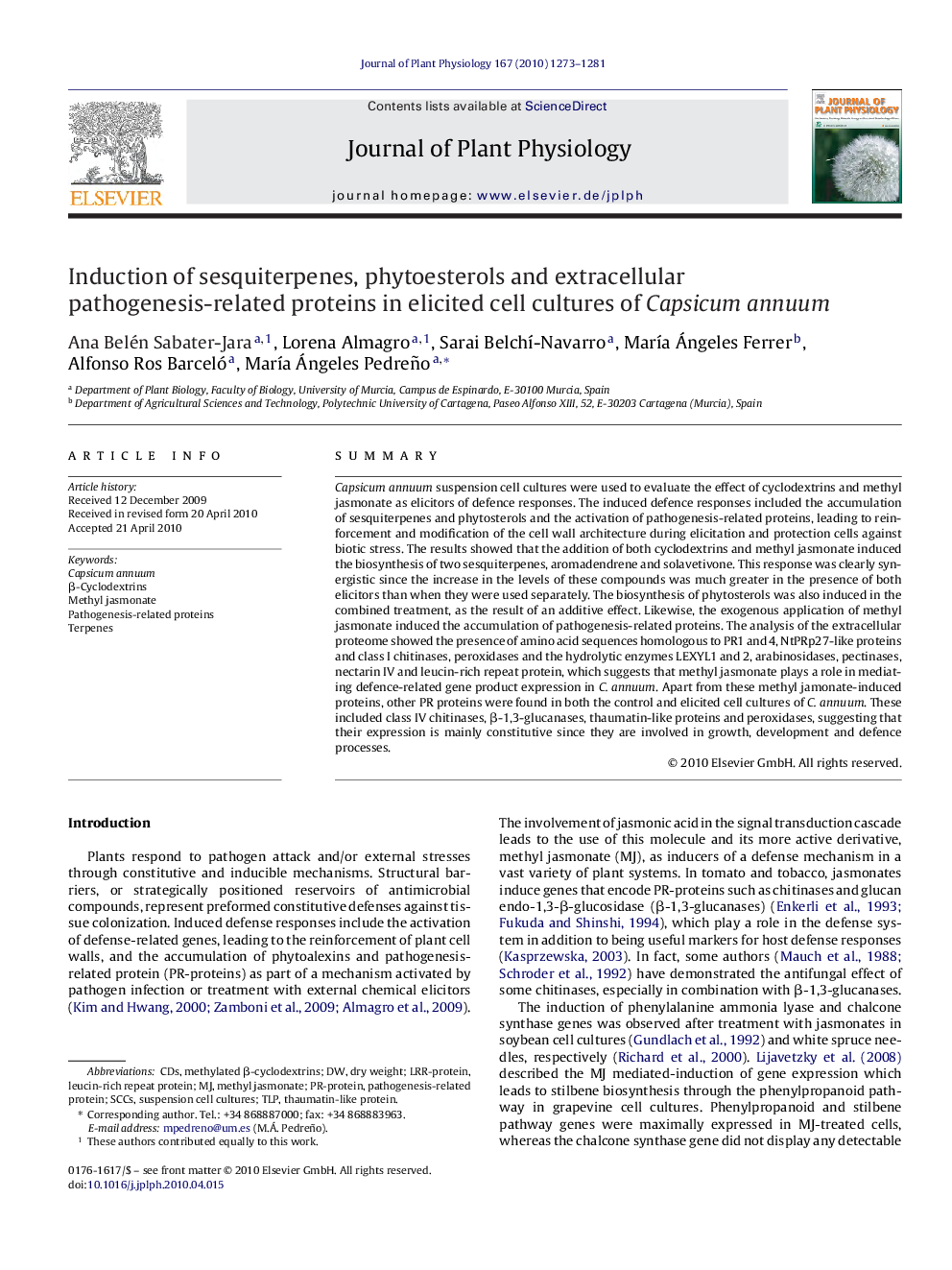| Article ID | Journal | Published Year | Pages | File Type |
|---|---|---|---|---|
| 2056762 | Journal of Plant Physiology | 2010 | 9 Pages |
SummaryCapsicum annuum suspension cell cultures were used to evaluate the effect of cyclodextrins and methyl jasmonate as elicitors of defence responses. The induced defence responses included the accumulation of sesquiterpenes and phytosterols and the activation of pathogenesis-related proteins, leading to reinforcement and modification of the cell wall architecture during elicitation and protection cells against biotic stress. The results showed that the addition of both cyclodextrins and methyl jasmonate induced the biosynthesis of two sesquiterpenes, aromadendrene and solavetivone. This response was clearly synergistic since the increase in the levels of these compounds was much greater in the presence of both elicitors than when they were used separately. The biosynthesis of phytosterols was also induced in the combined treatment, as the result of an additive effect. Likewise, the exogenous application of methyl jasmonate induced the accumulation of pathogenesis-related proteins. The analysis of the extracellular proteome showed the presence of amino acid sequences homologous to PR1 and 4, NtPRp27-like proteins and class I chitinases, peroxidases and the hydrolytic enzymes LEXYL1 and 2, arabinosidases, pectinases, nectarin IV and leucin-rich repeat protein, which suggests that methyl jasmonate plays a role in mediating defence-related gene product expression in C. annuum. Apart from these methyl jamonate-induced proteins, other PR proteins were found in both the control and elicited cell cultures of C. annuum. These included class IV chitinases, β-1,3-glucanases, thaumatin-like proteins and peroxidases, suggesting that their expression is mainly constitutive since they are involved in growth, development and defence processes.
